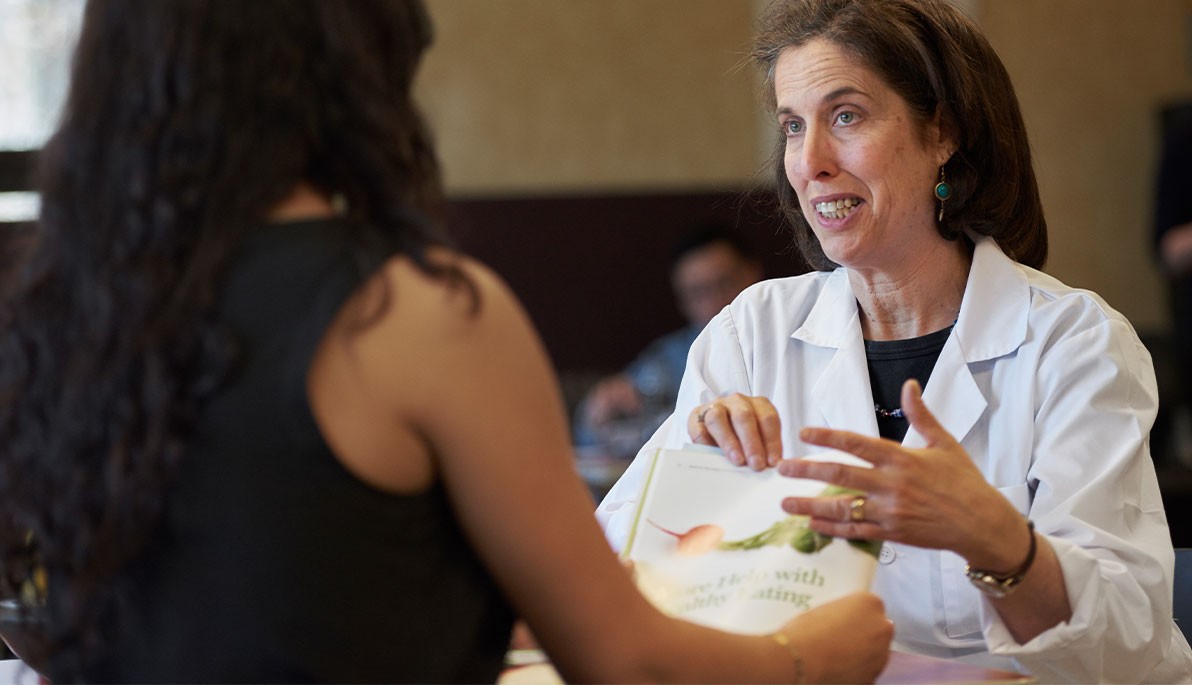News
“Fall”-ing into a Healthy Lunch Routine
September 11, 2023
The fall semester is underway, presenting opportunities for students, faculty, and staff to set themselves up for success in the new academic year. But, for many, this time also comes with adjusting to fuller schedules and added demands.
Students are busy. Between juggling coursework and assignments with part-time work, family, and social time, packing a healthy lunch might take a backseat. Toss in a long commute to campus, and the struggle is real.
However, students certainly aren’t the only ones. For faculty and staff teaching courses, conducting research, holding office hours, grading projects, and completing administrative work, carving out time to prepare a nutritious meal can be challenging.
As students, faculty, and staff return to campus, nutrition expert Mindy Haar, Ph.D., RDN, clinical associate professor and chair of interdisciplinary health sciences, shares simple tips and tricks to help all members of the campus community “fall” into a healthy lunch routine.
Why is a healthy lunch important?
As different foods contain different nutrients—even within the same food group—eating a variety of foods maximizes our chances of consuming a balanced, adequate diet. Every meal and snack is an opportunity for us to get what we need, and thus, lunch, our midday meal, deserves attention and planning.
What constitutes a well-balanced lunch?
Following the pattern suggested by My Plate, the lunch meal should include a generous amount of vegetables and fruit as they are rich in vitamins, minerals, and fiber. A portion of whole grains (about half a cup or one slice of bread) can provide fiber as well and checking the label for at least three grams of fiber/serving should be done. A portion of protein rounds out the meal with recommended animal-based protein such as fish, white meat poultry, egg whites, low-fat cottage cheese, or yogurt.
However, moving to a more plant-based diet by including beans, tofu, edamame, hummus, nuts, or seeds as protein sources introduces even more nutrients and is eco-friendlier.
What are some strategies to make preparing lunches easier?
Not planning for the week in advance may leave you to pack lunches just based on what’s on hand but drawing up a menu for the week can increase variety and nutritional value. Whenever possible, save prep time by using dinner leftovers. Preparing food in quantity eliminates cleanup time (also leaving more time to exercise!) and fewer opportunities to nibble. Examples of freezer-friendly foods include flax seed muffins, vegetable soups, and vegetable burgers.
A bonus tip for parents packing their children’s lunches: letting your children help with shopping and food prep will assure that they don’t bring home lunch containers filled with uneaten food.
What are some simple, healthy lunch ideas?
Instead of rigid recipes, making healthful combinations from foods requiring little prep time will maximize the chances of brown-bagging a super-healthful lunch vs. buying something available, which might offer less control.
Just choose one option from each column and pack it into a reusable container. Add a piece of fresh fruit, and you’re all set!
Protein |
Complex Carbohydrate |
Vegetable |
Tofu |
Whole grain bread, pita |
Cut up fresh vegetables |
Hummus |
Brown rice |
Frozen vegetables |
Beans/Chick peas (fresh, canned) |
Whole grain wheat products: |
Canned tomato-ideally low sodium |
Vegetarian Burger |
Beans, bean pasta |
Edamame |
Seeds |
Quinoa |
|
Nuts |
Barley |
|
Cottage cheese/yogurt |
Corn |
|
Fresh or canned fish |
Amaranth |
|
White meat poultry |
Baked potato: sweet or white |
|
Red meat – no more than once per week |
Other simple, healthy meal options:
- Baked potato stuffed with broccoli and plain yogurt
- Lentil/split pea/barley soup and whole grain bread
- Stir fry tofu and vegetables with quinoa
- Whole wheat vegetable pizza
- Bean burgers and whole wheat pasta
- Salmon, edamame, and whole wheat couscous
What about healthy snacks to have on hand?
When choosing snacks, you want to keep in mind serving size, nutrient density vs. energy density, your daily nutrient goals, and lower fat alternatives. Given this, here are some good options:
- Cut-up fruits and vegetables
- Fruit kabobs: cut-up fruit on a toothpick or skewer
- Whole grain crackers and/or cut-up vegetables and hummus
- Frozen grapes or canned pineapple rings
- Rice cakes or whole grain crackers with yogurt or peanut butter
- Yogurt and fruit with nuts
- Fruits and vegetables
- Whole grain cereal and milk or yogurt
- Hummus with vegetables or crackers
- Nuts and raisins
These are all great ideas. Anything else that readers should know?
Through the Bear Bytes initiative, New York Tech offers resources to expand students’ access to healthy eating, which is essential to academic success. The Smart Meals Program offers individualized assistance to students at the New York campuses, helping to identify and explore potential financial resources to be used to purchase food items. In addition, the Grizzly Cupboard, a pantry that offers healthy nonperishable food items, is an inclusive, welcoming, and stigma-free resource for students enrolled at the Long Island and New York City campuses.
This interview has been edited.





